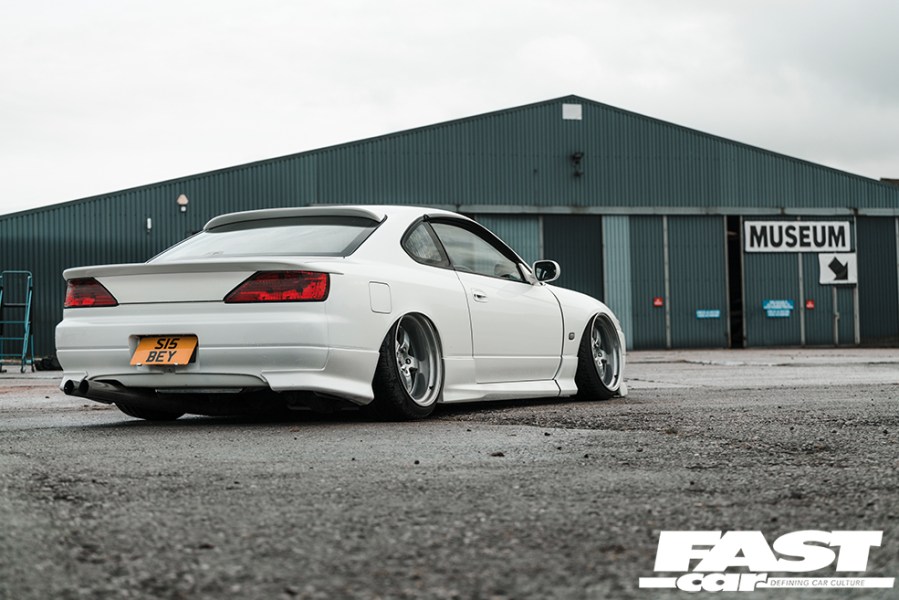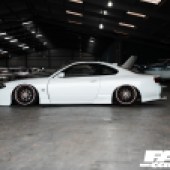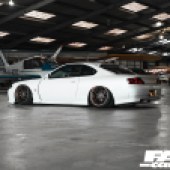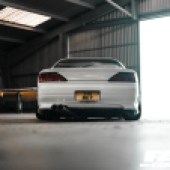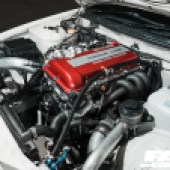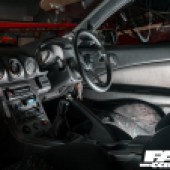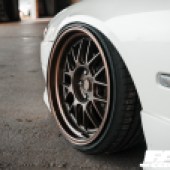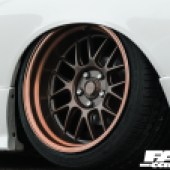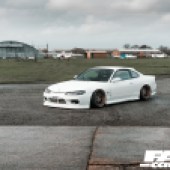Some cynics will say that a bagged S15 is borderline sacrilege. But for Tim Tremlett, bagging his drift car turned out to be the turning point that helped him rework the project for maximum impact…
Fast Car magazine. Word: Dan Bevis. Photos: Joe Austin
The old maxim that you should build your car for you rather than to please anyone else is as true today as it’s ever been. Sure, it’s nice to win trophies on the showground, to have people come up to you in petrol stations and say ‘Nice car, mate,’ and so on – but the only person you need to please is the one behind the wheel. Your car, your rules. So anyone who casts Tim Tremlett the stink-eye for shoving an air-ride system into his S15’s undercrackers can collectively wind it in: he’s done this for logical reasons. Besides, he’s definitely more of a driver than a show tart, as his motoring history demonstrates. Graduating from the default first-car Corsa (boot full of subs, we all did it) to a tramp-drift Volvo 360 back in 2009, he had an early introduction to the world of drifting. After a winter of Scandinavian skids, Tim moved on to an E30 BMW, which he shoved a bigger engine into and enjoyed slaying tyres until he was old enough to insure something he really wanted. Something Japanese and turbocharged. Specifically, a Nissan S13.
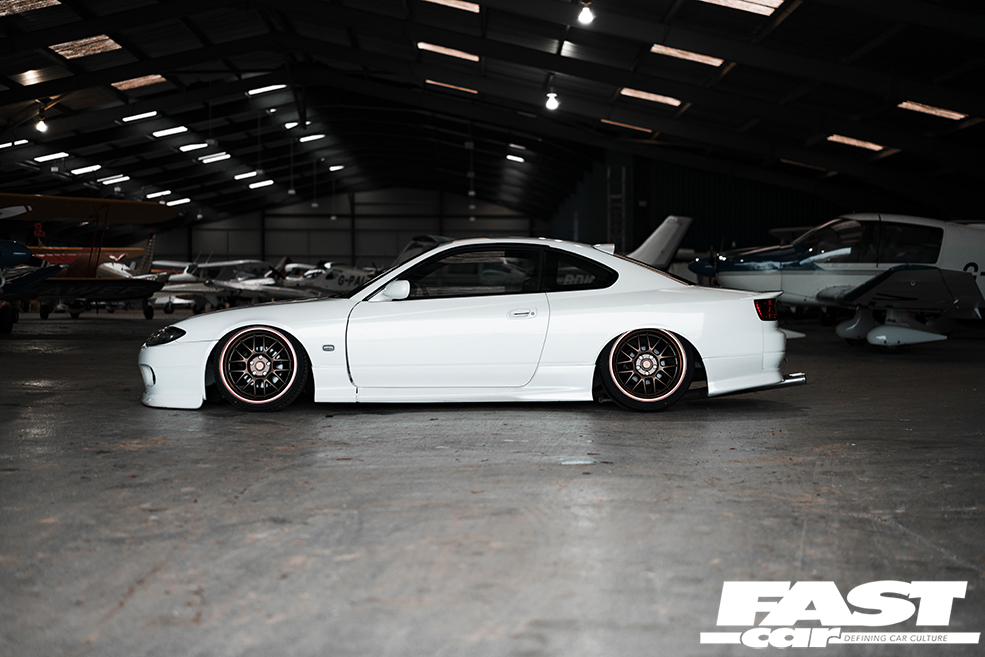
“That ended up being a daily-driver, drift car and general project for the next four years or so,” he recalls. “Over this time, it was transformed from a multi-coloured rolling shell to a fairly respectable-looking street/drift car with a red-top SR20DET. Unfortunately, as with most UK S13s, it was rust that killed that car.”
Land of the rising fun
And with the scene colourfully set, it’s time to refocus our attentions on another chapter of Japanese folklore. Those of you who’ve enjoyed the rather sublime car-chase-with-a-bit-of-plot-attached movie Ronin will be familiar with the tale of the Forty-seven Ronin. In short, it references a true story that took place in Japan in the early eighteenth century, which is held up as a key example of bushido – the samurai code of honour. A group of samurai were left leaderless when Asano Naganori, their feudal lord, was compelled to commit seppuku after an altercation with a court official named Kira Yoshinaka. The Forty-seven Ronin planned for a year, avenged their master’s death by killing Yoshinaka, then committed mass seppuku themselves. It’s a story that’s since inextricably woven itself through Japanese heritage and culture, a symbol of persistence, loyalty, sacrifice and honour.
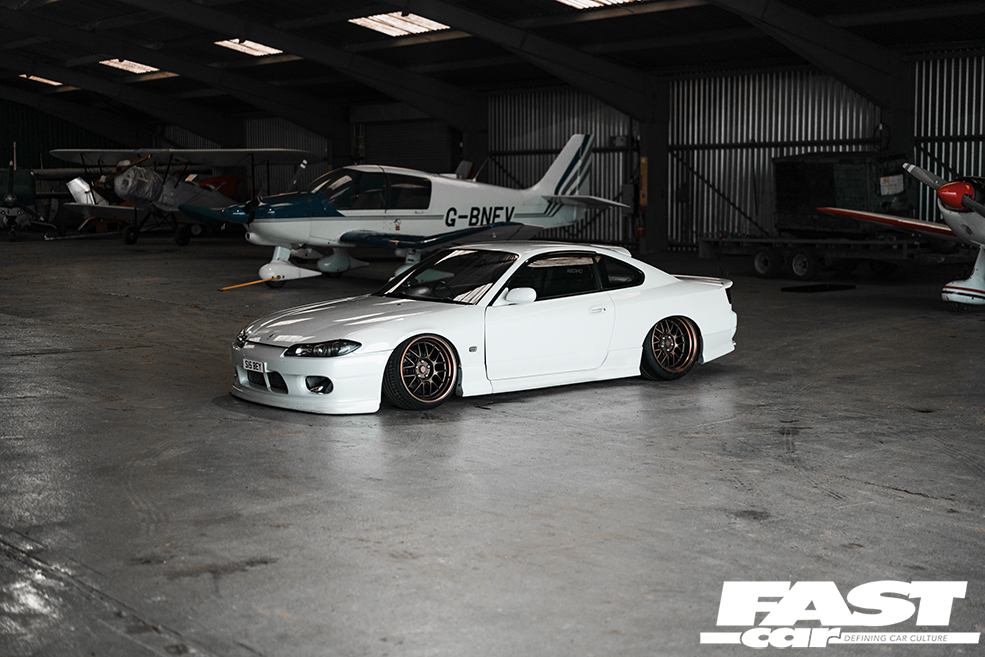
The S15-generation Nissan Silvia shares much with this folkloric troupe. The Silvia name itself stretches way back to the CSP311 coupe that debuted at the 1964 Tokyo Motor Show (under the guise of its alter ego, the Datsun Coupe 1500), and has graced a plethora of iconic models, from the wilfully odd Group B 240 RS rally cars to the ubiquitous S13 and S14 driftmobiles that enjoy such popularity in retro circles today. But the S15, the last of the line, was the model that saw the S-platform orphaned, abandoned, deemed superfluous by a corporate decision to streamline and update. After generations of loyalty to the platform, the Silvia was left without its feudal lord, condemned to stalk the lands and seek its honorific vengeance.
…and not many lands, either. As well as being chopped down in stature to meet the dimensions of the Japanese government’s ‘compact class’ – something which had been hurting S14 sales – the S15 suffered the ignominy of not being a widely-exported model, only being officially sold in Japan, Australia and New Zealand (although grey imports abounded everywhere else, of course). So, who is the S15 Silvia seeking to exact its vengeance upon?
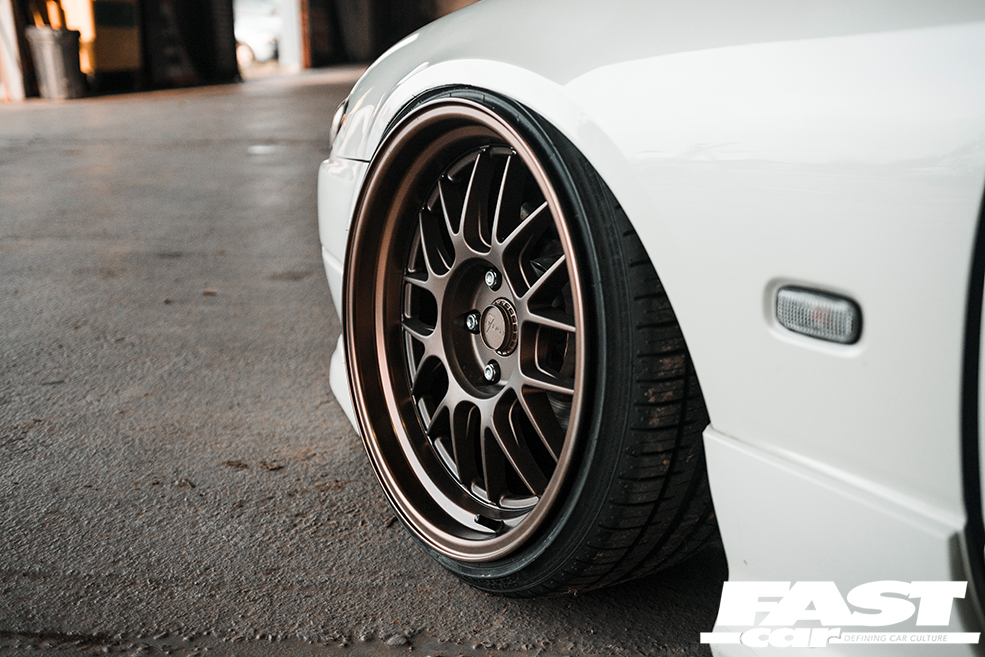
Well, in the case of this particular example, the answer could well be tyres – but more specifically, let’s just say high-octane fuel. Tim was fully enamoured with the manner in which his S13 skidded about with wilful abandon, and it was time to level up to the true Ronin-hearted S15. “When I realised that my S13 was beyond repair due to the amount of rust on the shell and chassis, it seemed like natural progression to get an S15,” he reasons. “I’d actually decided to move away from drifting by this point, the costs of running and repairs were sucking the fun out of it and I really just wanted a car that I could enjoy driving, instead of constantly repairing. I had always dreamed of owning an S15, although a Spec R was still out of my price range. I decided my best option was to buy a Spec S and convert it myself, using the SR20DET from my old S13.”
A masterful plan indeed, and Tim began making inroads into the process of importing a stock Spec S auto from Japan; however, in a happy flash of serendipity, it transpired that Marshall at MnM Engineering had recently imported a manual Spec S in Pearl White for a customer who ended up not buying it. It was just what Tim was looking for, being completely mint and totally stock aside from some Cusco coilvers and WedsSport wheels – so he swooped in and scooped it up.
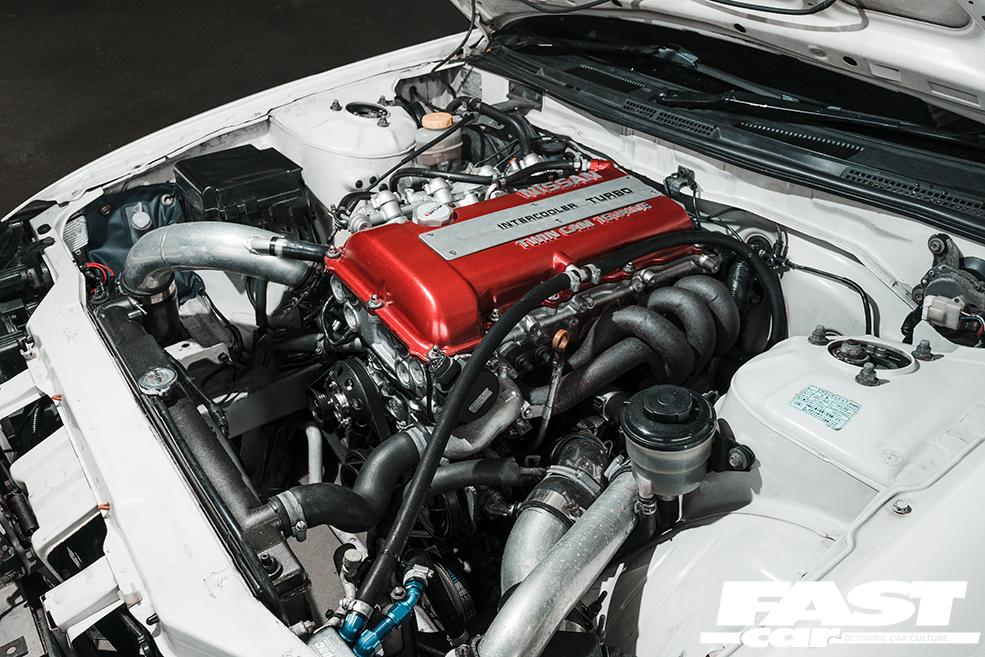
“The first thing I did was to replace the alloys with a set of 7Twenty Style 49s and wind the coilovers down,” he says. “After about a month of accumulating parts, I pulled the SR20DE engine out and replaced it with the red-top SR20DET from my S13. The swap was fairly straightforward and it all went smoothly, and within a few weeks it was back on the road – now with the power to match the looks! I was absolutely in love with the car, it was perfect. Apart from one thing…”
The speck of sand in the ointment here was the suspension: while Cusco coilovers are unquestionably a quality choice, Tim’s increasing move away from track-based hijinks meant that having a low-slung panscraper didn’t really fit in with how he was using the car. In order to have the car as low as he wanted, he was having to sacrifice just a little too much comfort and driveability, and this situation was (both figuratively and literally) beginning to grate. “I spend a lot of time driving the car on country roads around where I live,” he says, “and I knew that if I didn’t do something about the ride height, the underside of the bagged S15 would soon resemble my old, rotten S13.
Obviously raising the car wasn’t an option. So I opted for air suspension.”
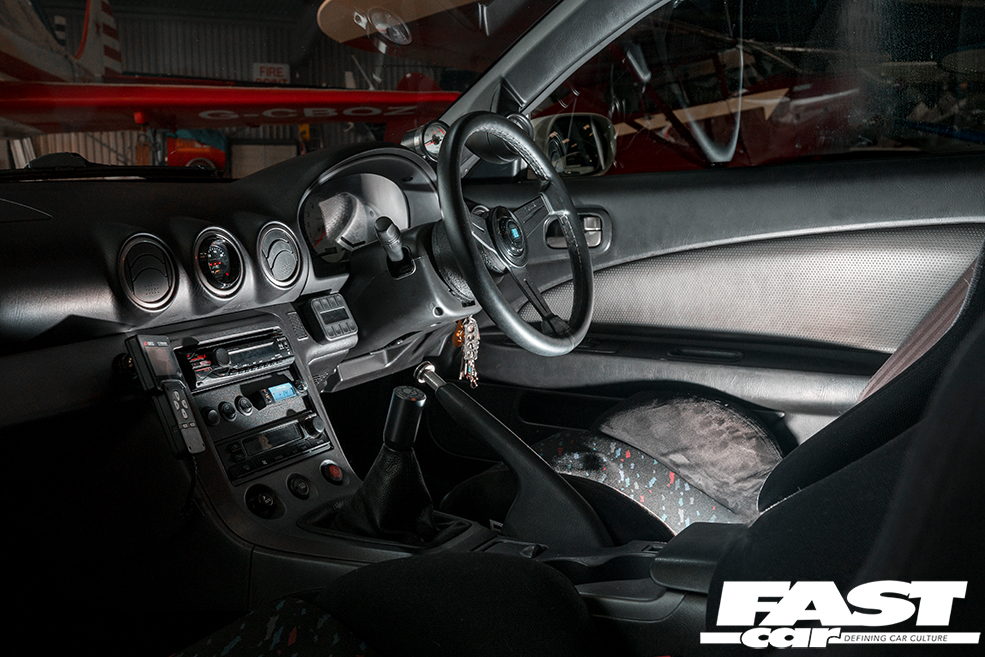
You see, when he puts it like that, it’s perfectly reasonable. And once again, the spectre of serendipity was there to provide a helping hand: “I put together my own air suspension kit using the shocks, bags and tank from Ksport that, surprisingly, I found for sale on Driftworks,” he continues. “I replaced the Ksport manifold and controller with Air Lift V2 management, which is miles better. Yes, I was unsure about the air suspension idea at first, but in hindsight it was the best decision I made for the car – I can now drive it as low as I want without sacrificing my spine, I can raise it up for speedbumps, and I can drive fast on country roads without ripping the exhaust off! It transformed the S15 from ‘cool-looking but essentially useless’ to a perfect all-rounder.”
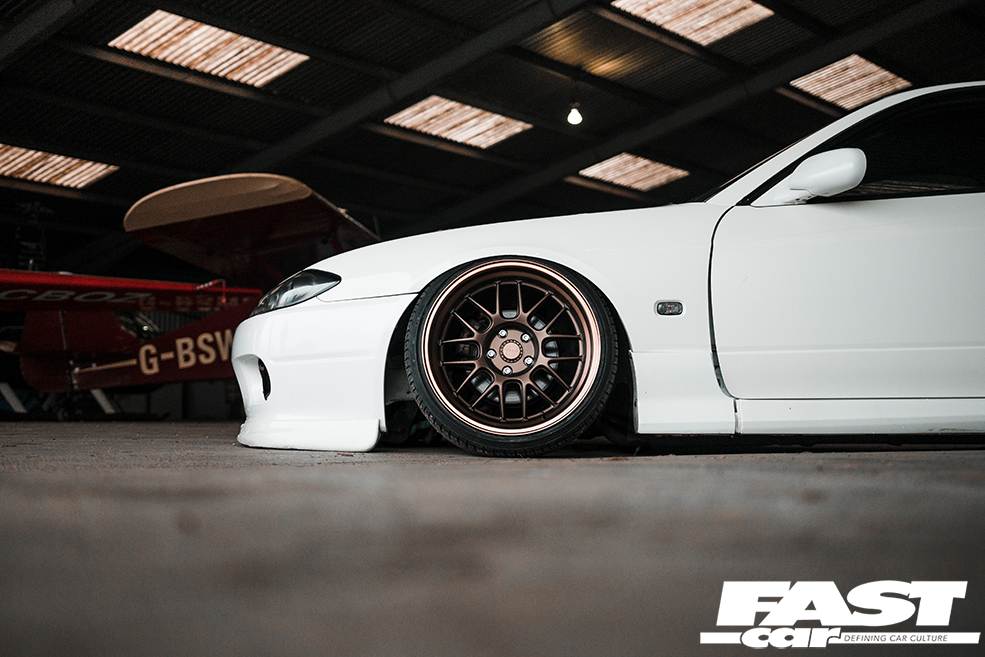
Bagged S15: Silvia lining
That really does sound like the sort of transformation you want to achieve; after all, there’s no point building a cool car if it’s just going to become a pretty ornament. (Well, unless that was your aim in the first place – but that’s a very different thing.) The bagged S15 became properly usable, and Tim continued to refine the platform to accentuate this. The old suspension arms were replaced with 7Twenty items, all the ageing bushes were renewed, a set of Whiteline ARBs was stirred into the mix, and he swapped in a helical LSD. “I also worked on styling the car to get it to look exactly how I wanted,” he says. “It came with the Aero sideskirts and spoiler, which was a massive bonus; I then added the DC2 Integra front lip, Origin roof spoiler, and ultimately replaced the Aero spoiler with a 326 Power Luxhane spoiler. Less-is-more has always been my way of thinking when modifying cars – I’ve never been one to just slap a load of parts on a car for the sake of modifying it.”
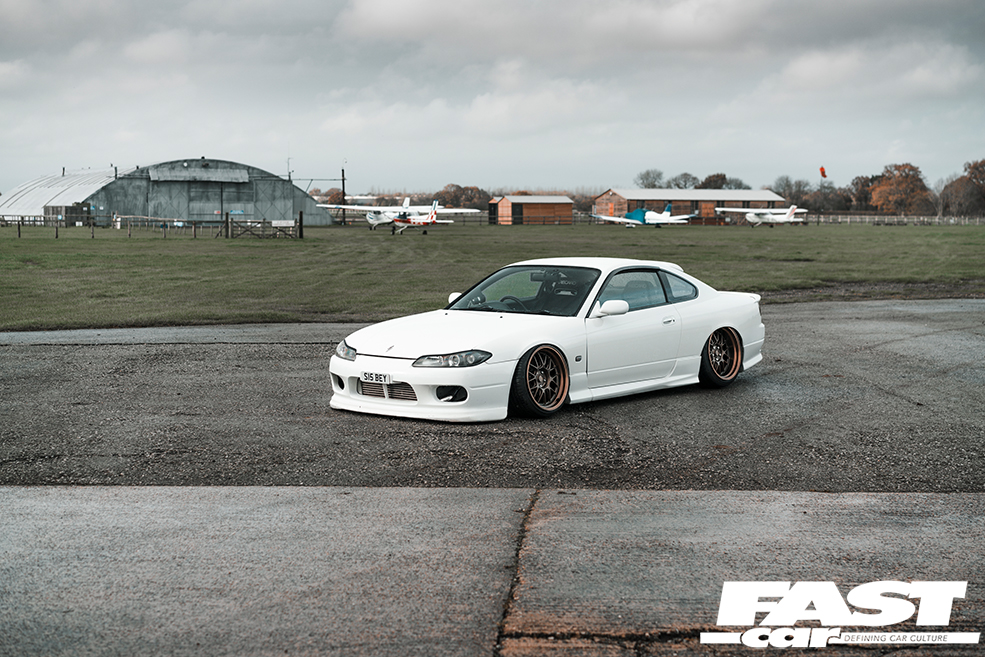
This economy of addition has paid dividends, as the finished result strikes just the right tone. This is also true of the interior, with a keen focus on usability; the seats have been replaced with Supra-sourced ‘confetti’ Recaros up front and a leather S14 bench in the back, and there’s a pleasingly tactile Nardi wheel. And all of this has led to the bagged S15 being reinvented as exactly the sort of car Tim had always hoped it’d be. “For now, I’m pretty content with it,” he smiles. “There are probably a few little things that I might change up over time; for example, I’d like to upgrade the turbo to a 2871R or similar at some point. I also plan on stripping and refreshing the whole underside of the car next winter, if I can find somewhere warm and dry to work on it. But the main plan is just to enjoy owning and driving it. I spent the first few years getting the car to look and perform how I wanted, now it’s time to enjoy the fruits of my labour.”
That’s what it’s all about, really. Form and function in perfect harmony, built on a strong bedrock of driver enjoyment and engagement. And yes, some haters will make snarky comments about the bagged S15, but it’s really none of their business. Tim built this car for Tim. It’s everything it needs to be.
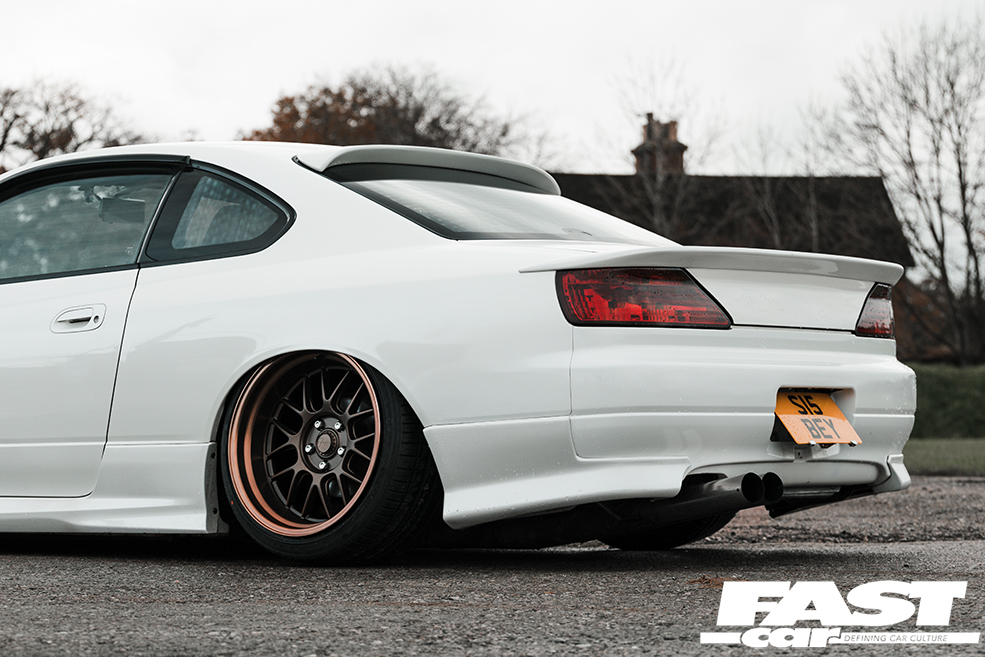
Tech Spec: Bagged S15
Engine:
SR20DET straight-cam red-top (from 180SX), fully rebuilt (with Cosworth head gasket, ARP bolts, new piston rings, bearings, all gaskets etc), Kinugawa TD05 18G turbo, Nismo 555cc injectors, Z32 air flow meter, A’PEXi dual-funnel intake, GReddy front-mount intercooler, full Japspeed exhaust system (manifold, elbow, super-low twin downpipe, decat, twin 3-inch shotguns), A’PEXi Power FC standalone management, S15 Spec S 5-speed manual, ACT HD organic street clutch, ACT lightened flywheel, S15 Spec R helical rear differential
Power:
320-330bhp (est.)
Chassis:
9.5×18-inch ET18 (front) and 10.5×18-inch ET15 (rear) 7Twenty Style 49 wheels in custom chrome powdercoat (or Style 57 in matte anodised bronze), 20mm front spacers, 215/35 Nankang NS2s (front) and 245/35 Uniroyal RainSport 3s (rear), Project Mu brake pads, Ksport Airtech shocks and bags, Air Lift V2 management, Viair 444cc compressor, Ksport 5-gallon tank, 20mm-extended front lower control arms, 7Twenty front tension rods, Whiteline front and rear anti-roll bars
Interior:
Recaro ‘confetti’ front seats (from Toyota Supra), leather S14 rear bench, Nardi Classic 330mm steering wheel, GReddy 60mm electronic boost gauge, GReddy Profec B Spec 2 boost controller, AEM air/fuel ratio gauge
Exterior:
Aero sideskirts, Aero rear spats, Integra DC2 front lip, Dmax 50/50 rear lights (tinted full red), 326 Power Luxhane boot spoiler, Origin roof spoiler, Nismo tinted side repeaters, front and rear arches rolled and slightly pulled

